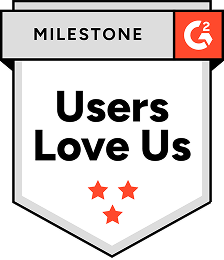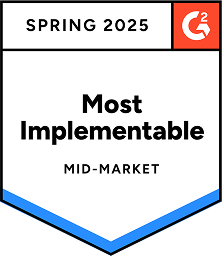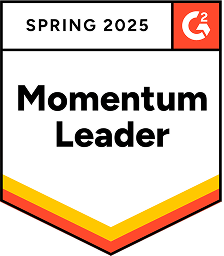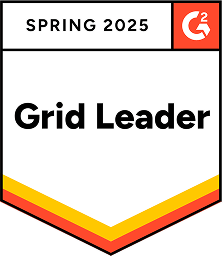5 Demo Request Follow-Up Templates That You Just Need
.png)
Although the data ranges, there’s consensus that the majority of inbound leads won’t convert. Reply.io estimates that as many as 90-95% of inbound leads don’t end up converting.
Scrupulous planning and considerable marketing dollars go into the channels meant to draw buyers in. Once they’ve done their job, your inbound sales copy needs to do its job too. And when it comes to demo requests, that job is convincing buyers to save the date.
Demo requests should be followed up with multiple emails, but you can decrease how many it takes or even bypass needing multiple with a strong initial email. And by strong we mean human.
Sounding human in your demo request follow-ups is the biggest favor you can do for yourself. So many companies automate their demo request emails because it’s easy to do, which means you can stand out by simply not sounding like a robot.
Here’s the plot twist though- we’ve used Regie’s AI to help draft five inbound sales templates for demo requests that sound human. After each template, we’ll tell you why it works and how to make it your own. Use our examples as creative inspiration or as an exact model, to make sure your leads schedule and show up for their demo.
Template #1
Subject Line: Before Your {{!! SENDER COMPANY }} Demo
{{!! RECIPIENT NAME }},
Thanks for the demo request. Curiosity about {{!! SENDER COMPANY }} is always appreciated. Should we get the logistics out of the way so we can make it happen?
I just need a time and date that you, and anyone on your team who’d like to join, are free for {{!! TIME IN MINUTES }} minutes.
I also have a few questions to help customize your demo to [[Company]]’s needs, but consider them optional. {{!! BULLETED LIST OF QUESTIONS}}
Thanks again for your time and you’ll hear from me soon.
{{!! YOUR NAME }}
Why It Works and How To Make It Yours
Thank your lead for the request sooner than the final line of your message. This will help communicate your sincerity, rather than give the impression that your “thank you” was just a way to wrap up the email.
You should also mention your company’s name early on in the message as well. This template does it immediately after thanking the recipient in the first line, so the recipient can be certain about which company they’re scheduling a demo for.
This template is easy to use as is. It’s very much a “fill in the blanks” type of format. But making changes is easy as well. Its next line, for example, can take on a different tone with just a few adjustments.
If you’d rather sound more direct, “should we get the logistics out of the way?” can become “let’s get the logistics out of the way?” or even “let’s get the logistics out of the way.” Just be careful to never sound too pushy.
Even though your lead has requested a demo, they aren’t bound to anything. You still want to make sure you’re being accommodating, especially in your tone of voice.
You’ll obviously need to find out when your lead is available so you can schedule their demo. This template asks for a time and date that are convenient not only for your lead, but also for the members of their team who they’d like to join the demo.
This is another way to be accommodating and create less work for your lead. If the demo goes well, your lead won’t have to repeat what they learned to other decision-makers. Instead, everyone who needs the information will have it from the best possible source, your company.
Don’t forget to communicate how much time your demos require. This makes scheduling the demo easier for everyone and manages your lead’s expectations.
The last section of this template includes the opportunity to ask your lead some questions. Ask about their goals and challenges, or the more logistical questions that your clients are asked before using your product or service.
We recommend stating that your questions are optional so a busy lead doesn’t feel like they have even more to do. After your questions, close out the message with another thank you and let your lead know they’ll hear from you soon.
Tip: Be prepared to email your lead multiple times before actually pinning down a demo date. Sometimes there will be back and forth but a steady stream of communication, and other times a lead will show interest only to go completely dark. In either case, try using a follow-up nurture sequence to increase engagement with your lead and keep your product top of mind.
Template #2
Subject Line: Re: Your {{!! SENDER COMPANY }} Demo Request
{{!! RECIPIENT NAME }},
I’m here to follow up on your demo request for {{!! SENDER COMPANY }}. First I’d like to say that we always appreciate someone who takes the time to learn more about us, so thanks for being one of those people.
Our demos run for {{!! TIME IN MINUTES }} minutes and cover: {{!! INSERT BULLETED LIST OF DEMO AGENDA }}
Relevant [[Company]] team members are welcome to join us as well. I’ve also put together some simple data on {{!! SENDER COMPANY }} to give you a little more context before your demo.
Once you know when you’re available, get back to me with a time and date that’s convenient for you, and we’ll get your demo scheduled.
Thanks again for your interest and we’ll talk soon.
{{!! Your Name }}
Why and How
This template begins by clearly stating the reason for the message, including the use of your company’s name. It then moves on to thanking the lead for their interest.
Doing both is a solid combination because you’re respecting your lead’s time and acknowledging that they’re important to you and your company. How you make your lead feel is just as significant as straightforward communication.
Next, you’ll provide your demo’s agenda. This is the pièce de résistance for this template because your lead will know exactly what your demo covers prior to experiencing it. Awareness of what’s on the agenda not only provides value to your lead, it increases their connection to it. Instead of remaining an obscure concept, your demo now has context and structure.
This is especially true for the personalities who prefer to have as much information as possible before committing to something. Within your agenda’s agendas bulleted list, try to tie in value propositions where it makes sense.
Tip: Did you know that Regie.ai writes sequences with DiSC to improve engagement? Accounting for personality helps sellers cut through bias and optimize tonality in their sales writing.
Continuing the theme of information prioritization, this template also provides its recipient with data. Make sure to include data from your company so your message is packed with value that fully prepares your lead for their demo. Remember, they’ve requested a demo but you still have to convince them that it’s worth their time to follow through.
Close your message with a request for a time and date that your lead is available, thank them and let them know that you’ll connect again soon. You could also add in a few time slots that you’re available as well, for a proven CTA best practice.
Don’t be afraid to mix and match strategies from each of these templates to construct a message that works best for you. Variety is one of the keys to successful email campaigns.
Template #3
Subject Line: {{!! RECIPIENT NAME }}, your {{!! SENDER COMPANY }} demo
{{!! RECIPIENT NAME }},
We’ve received your demo request and we’re excited to get started.
Here’s a quick refresher on {{!! SENDER COMPANY }} in case you’ve already mentally moved on (it happens). We [[value-proposition]] and address [[painpoint]].
When’s a time and date that’s convenient for your demo? Once I have that information, I can send over a calendar invite. Our demos typically take {{!! TIME IN MINUTES }} minutes with {{!! TIME IN MINUTES }} reserved specifically for your questions. We’re also happy to host any additional members of your team who’d like to join as well.
You can expect a calendar invite shortly after I hear back from you. Until then, be well and we’ll talk soon.
{{!! YOUR NAME }}
Why and How
The first line of this template clearly states what the email is about, which is important. On average, sales emails written at a third-grade reading level tend to perform better overall.
The email then moves on to reminding its recipient about what your company does. Take your time on this section to really communicate your company’s value in a human-to-human way.
Doing some research on your lead’s company prior to reaching out can help you gear an explanation of your own company toward your lead’s needs. By thinking about your lead’s needs while you describe your company’s value, you have the chance to deepen your company’s appeal, in turn increasing the likelihood of your lead scheduling a demo.
Because many demo request follow-ups are triggered messages, this template and its need for research may better fit your efforts as a second follow-up email. However, an initial demo request follow-up email with research will definitely stand out.
Ask for a time and date that’s convenient for your lead, again making it clear how long the demo will take and that the relevant members of their team are welcome to join. Also, be sure to refer to your demo by the channel it will take place on.
If your demos happen over phone calls, say something like “when’s a time and date that’s convenient for our call?” or “that’s convenient for our virtual meeting?” if you use something like Zoom.
This template also lightly mentions the demo’s agenda by letting its recipient know that time is allotted specifically for your lead’s questions. By providing your lead with details about the demo, like how much time is required and what amount of that time is reserved for their questions, you’re increasing the value of your email.
People appreciate information before committing to something, so include relevant details where you can.
Tip: Sending your calendar is an efficient way to schedule almost anything. However, you may not be the person running the demo. Either coordinate with who is or don’t include a calendar at all.
Finish up the message by telling your lead what they can expect from you as a next step and then you’re ready to press send. Well, proofread, then press send.
Template #4
Subject Line: {{!! SENDER COMPANY }} Demo
{{!! RECIPIENT NAME }},
I see you requested a demo from {{!! SENDER COMPANY }}, which is great. We’re always happy to go over how {{!! SENDER COMPANY }} works.
When is meeting convenient for you? Our demos take about {{!! TIME IN MINUTES }} and anyone on your team is welcome to join. If it helps, we’re available [[timeslot-1]] or [[timeslot-2]].
I’ve also included a customer testimonial and some data I put together to give you more context before we meet, but feel free to respond with any questions you’d specifically like answered during the demo. {{!! INSERT CUSTOMER TESTIMONIAL}} {{!! INSERT DATA }}
Thanks for the time you’ve given me thus far. I appreciate it and am looking forward to hearing back.
{{!! YOUR NAME }}
Why and How
Start by mentioning your company’s name in the first line like this template does. Opening by simply stating that the message’s recipient requested a demo from “blank” company is an uncomplicated and effective way to begin a demo request follow-up. Your lead will immediately know what the message is regarding.
We like this template’s opening lines as well. You think it’s great that they’ve requested a demo and you’re always happy to provide more information. It’s straightforward, it’s friendly and your lead won’t feel pressure.
Find out when your lead is available for their demo and provide two time slots that you’re available as well. This may take some coordination if you aren’t the team member who provides demos, but being able to suggest a few times to meet is valuable. Acting as another layer of your CTA, scheduling is more efficient and actionable when you ask for your lead’s availability and provide your own as well.
The next section of this template is the cherry on top. You’re adding value to the message by including information that not only provides your lead with more context but also shows off what your company does for its clients.
If your demo request follow ups are triggered messages, then use your best case study and general data for this template. Otherwise you should choose a case study from a client company that is similar to your lead’s company and prepare some data that encompasses success metrics that are applicable to their company as well. Or use this template as a follow-up to your initial follow-up, so you have time to research your lead’s company.
Now all that’s left is to let your lead know that any questions they have prior to the demo are welcome, that you’re grateful for their time, and that they’ll hear from you soon.
Tip: Worried about sending a two-word subject line? Regie's data show that subject lines ranging from two to five words elicit the highest open rates on average. For more information, brush up on myth-busting subject line best practices.
Template #5
Subject Line: {{!! SENDER COMPANY }} Demo, Time & Date
{{!! Recipient Name }},
Thanks for requesting a demo. I think you’ll find experiencing {{!! SENDER COMPANY }} in real-time to be encouraging, since our solutions are designed for a company with specs like [[Company]]: {{!! RECIPIENT COMPANY SIZE, INDUSTRY, RELEVANT DESCRIPTORS }}.
Our demos take about {{!! TIME IN MINUTES }} minutes, with the final {{!! TIME IN MINUTES }} reserved specifically for your questions.
With that said, when’s most convenient for you? We’re available [[timeslot-1]] and [[timeslot-2]], but have no problem maneuvering around your schedule.
Once you look over your agenda and get back to me with what works, I’ll send over a calendar invite. Enjoy the rest of your day {{!! RECIPIENT NAME}}.
{{!! Your Name }}
Why and How
This template requires research, so it’s better used as a second follow-up email after a demo request if your first message is triggered. But it’s a very strong template. You’ll begin by thanking your prospect and mentioning your company’s name early in the email, by comparing it to your lead’s company.
Taking the time to research your lead’s company signals the effort you’re putting into the correspondence. And by finding similarities between your lead’s company and your current clients, or between them and your ideal customer, you’re assuring your lead that they were right to have interest in your company. Use your ideal customer profile (ICP) or the specs of current clients to find out what’s worth mentioning to your lead.
For example, if your product or service is meant to help companies with fewer than 25 employees onboard new hires, then mention that like your lead’s company, your product or service is ideal for a 20 employee team. Or that like your lead’s company, you recently worked with “so and so” client who also had a 20 member team, but with your help, now has 35 employees. Draw connections where you can, and you’ll increase the likelihood of a demo being scheduled.
By this time you should know the drill. Provide information on how long the demo will take, ask when your lead is available and include when you’re available as well. Let your lead know what they can expect from you as a next step, i.e. a calendar invite if that's what you use, and close by putting their name in the final line.
While using a lead’s name in the opening line is an effective way to catch their attention, using it in the final line is a method for continuing your message’s personalization right until its end. Remember that you want your lead to feel like you’re talking to them and they aren’t just a sale to you. Finding subtle opportunities to make your message personalized will set your emails apart from the crowd.
Maintain Momentum from Inbound Leads
A lead who requests a demo has already found value in your company. They’re coming to you with interest. So it’s up to you to continue that momentum. The strategies used in each of these templates will help your demo requests turn into actual dates on your calendar. Even if you’re just using these templates as inspiration, stay cognizant of: sounding conversational, providing details, using CTAs that follow best practices and personalizing your copy.
You can also check out Regie for sales. We can help you generate entire inbound campaigns in just a few clicks, or provide content for one-off sales emails, value props and pain points. Plus we offer analytics that let you know what you’re doing that’s working, and what isn’t, so no inbound or outbound sales effort goes to waste.
FAQs
Read more posts
View all BlogsNeed more help?
If you still have questions, make sure to check out our Help Center: there, you'll find all the tips & advice you'll need to get your team up & running with Regie.ai.









